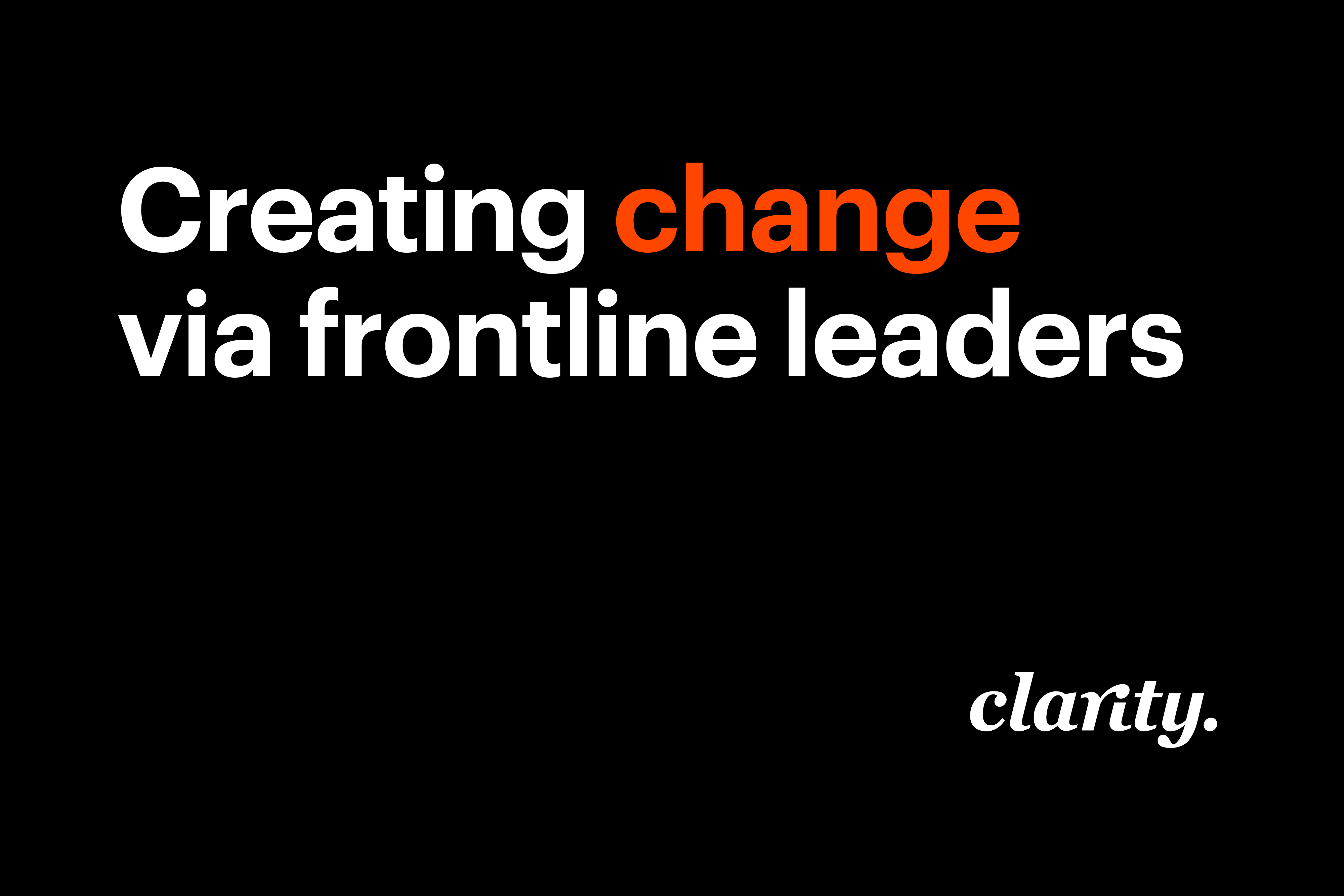

We see many change programs in our work – large transformations, restructures, new systems, new brands, new ways of working. We are asked to help shape the case for change, bring it to life, and make it meaningful for people whose day-to-day roles will be affected. One of the biggest challenges we see is getting frontline teams to embrace change and make it happen at an operational level.
Business leaders seek to inspire their workforce with a clear vision of the future and a compelling reason to move towards it. The goal is to build buy-in so employees understand why change is necessary, what it means for them, and how they can contribute.
Yet even the most robust change strategy quickly loses momentum if middle managers and frontline leaders are not engaged, equipped and supported. Research into internal communication effectiveness has shown that organisations which deliberately drive change through managers and supervisors achieve higher market premiums, stronger employee engagement and lower turnover than their peers.
Put middle managers at the heart of your change
Middle managers and frontline leaders are the most credible source of information for many employees. They are close enough to understand the realities of day-to-day work, and influential enough to interpret what change means for their teams.
In one organisation we worked with, a major strategic project affected staff from head office to frontline workers. Corporate teams wanted detailed progress updates via newsletters, intranet content and town halls with the executive team. Frontline workers, by contrast, simply wanted their line manager to explain what was changing, why it mattered and what they needed to do differently. They supported the project, but did not need constant high-level reporting – they wanted clarity and direction at a local level.
What made the real difference was how seriously line managers took their communication role. Some managers invested significant effort in translating corporate messages into practical actions for their teams. Others simply did not pass information on, leaving their people confused and disconnected from the change. The project’s effectiveness varied more by manager than by message.
Build a clear case and climate for change
The starting point is a compelling case for change that is honest about the current state, the risks of inaction and the benefits of taking action.
We recently supported an organisation in a heavily disrupted industry, where “business as usual” was no longer sustainable. They faced major market shifts, outdated systems and a long-tenured workforce less familiar with contemporary work practices. The reality was stark: “We either change or we won’t be here in five years.”
They had already done much of the hard thinking – a new business strategy, a transformation roadmap and multiple strategic projects. What was missing was a narrative that helped employees see where this had all come from and why change was necessary. Using an “iceberg” analogy, we worked with them to bring the substance under the waterline to the surface, explaining the drivers of change, the vision for the future and what it would feel like to work in the new environment. We also softened some of the language so it was understandable and less intimidating.
Middle managers then became the bridge between this overarching narrative and local realities – explaining what the case for change meant in their area, and how teams would contribute.
Tailor messages for different internal audiences
Change rarely affects every part of the organisation in the same way. Roles, locations, levels of exposure to customers and technology – all of these shape what people need to hear and how they prefer to hear it.
In the project example above, the head office audience wanted frequent updates, detailed milestones and visible executive sponsorship. Frontline employees valued concise, practical direction from their line managers, supported by simple collateral they could refer back to. The same project required different treatments to be effective.
This is where middle managers are essential. They can take a consistent core message and adapt it to local circumstances, answering the question “What does this really mean for us?” and addressing operational concerns in language that makes sense to their teams.
Equip managers – don’t just cascade information
Too many change programs assume managers will “translate and cascade” information once they receive an email or attend a briefing. Research shows that organisations with highly effective internal communication treat managers and supervisors as a distinct, high-value audience. They involve them early, provide detailed information and equip them with tools to communicate confidently.
These organisations:
- Provide managers with advance notice and context so they have time to absorb information and anticipate questions.
- Offer practical toolkits – slide decks, talking points, FAQs and local examples – that managers can adapt rather than create from scratch.
- Train managers in how to hold effective team discussions, handle resistance and link change back to performance and rewards.
- Recognise and reward managers who communicate well and support their teams through uncertainty.
As communication professionals, this is where we can add significant value.
Create feedback loops and measure impact
Effective change communication is two-way. High-performing organisations create channels for employees to provide input, ask questions and express concerns, and they act on what they hear.
Surveys, pulse checks, focus groups and manager-led discussions all help leaders gauge how change is landing. Organisations with highly effective internal communication are far more likely to measure how communication is contributing to business goals, and to adjust their approach based on evidence. They also use middle managers as a key feedback channel – collecting insights from team discussions and feeding them back into the change program.
When change doesn’t stick
When change does not land as intended, the instinct can be to revisit the strategy or refresh the corporate message. While this is sometimes necessary, it is equally important to examine what is happening in the middle of the organisation.
Are managers clear on the case for change and the desired outcomes? Do they feel confident in answering questions? Have they been given enough time and support to lead their teams through the transition? Are they being recognised for their role in making change happen, not just for hitting short-term operational targets?
Addressing these questions openly can rebuild trust and re-energise a change that has stalled.
When organisations place middle managers and frontline leaders at the centre of their change plans, equip them properly and listen to what they are hearing, they turn communication from a top-down message into shared momentum.















